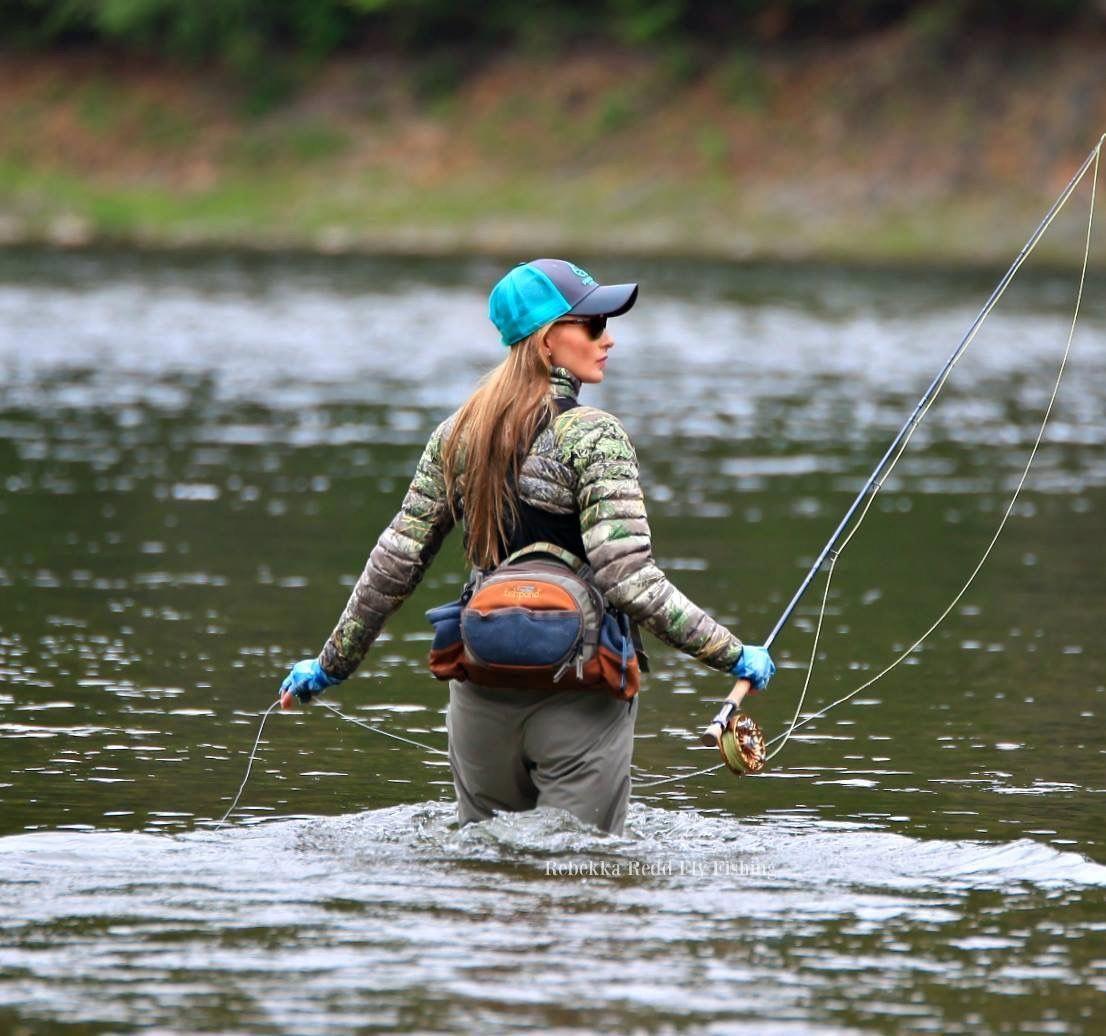
How Can You Care For Your Eco-Friendly Fishing Clothes to Extend Their Lifespan?
Fishing is a beloved hobby for many. In 2022, an impressive 54.5 million Americans enjoyed fishing in freshwater, saltwater, and fly fishing locations across the country. However, it’s important to consider the impact that clothing and gear used for fishing can have on the environment. Production of performance fabrics requires resources that contribute to pollution.
Fortunately, there are now friendly options available for fishing wear. Many brands have started using recycled materials and adopting production methods. To maximize the benefits of eco-friendly items and minimize waste, you must take proper care of them.
By adopting certain care and maintenance habits, you can extend the lifespan of your fishing clothes. Let’s explore some tips that will help you keep your earth fishing apparel durable for longer.
Eco-Care Habits for Fishing Attire
Caring for eco-friendly fishing clothes requires some special habits to maximize durability and lifespan. Certain conventional care methods can damage fabrics and shorten usable life. Here are tips to safely clean and handle earth-conscious fishing wear:
Wash Less Frequently
When possible, spot treat any stains and marks instead of doing full washes. The agitation and chemicals of frequent laundering can degrade fabrics more quickly. Allow clothes to air out between wears when they are not heavily soiled. When a full wash is needed, opt for gentle, quick wash cycles in cold water.
Air Dry
Skip the drying machine and allow clothes to line dry or flat dry laid out on a rack or towel. The heat of dryers can damage fibers, cause excessive shrinkage, and misshapen garments over time. Air drying takes longer but preserves the quality and performance of eco-friendly fabrics.
Use Cold Water
Wash eco-friendly fishing clothes using the coldest temperature recommended on care tags, or use lukewarm water if no specific guidance is provided. Hot water can more easily fade colors, break down natural and synthetic fibers, and shrink the fit of garments. Cold water is gentler on earth-friendly fabrics and helps them maintain their shape and function.
Check Garment Labels
Review the care instructions on each garment label for guidance on the ideal washing method, temperature, drying, and the use of bleach. Following the results of the recommendation in the best care for that item. Symbols provide handy shorthands – like a water tub for washing temperature, a square for machine drying, or a triangle for bleaching.
Use Environmentally Friendly Detergent
Choose plant-based, biodegradable, fragrance-free laundry detergents that are free of dyes, chlorine, and harsh chemicals. Conventional laundry products contain chemicals and ingredients that are harder on eco-fabrics in frequent use. Greener detergents clean effectively while treating your earth-friendly clothes gently.
Pre-Treat Stains and Marks
Rub stains gently before washing using just water or an eco-friendly stain remover or soap. This helps lift stains so the entire garment doesn’t need heavy washing. Spot treat marks as soon as possible after they occur for best results.
Zip, Button, and Tie Closures
Keep all closures – zippers, buttons, ties – fastened during washing cycles. This prevents excess strain or friction against fabrics during the wash process. Securing closures enhances gentleness.
Use Mesh Laundry Bags
For delicate eco-friendly items like swimsuits and undergarments, place them inside a soft mesh laundry bag. This adds a layer of protection from stretching, snagging, or damage during washing.
Why Choose Eco-Friendly Fishing Clothes?
Fishing clothes often utilize fibers such as polyester and nylon due, to their performance benefits, including moisture quick drying, stretchability, and UV resistance.
However, these fabrics do have drawbacks:
- They are made from resources derived from petroleum.
- The manufacturing process releases chemicals that can pollute the environment.
- They cannot be easily broken down. Recycled.
- When washed they release microplastics into waterways.
- Eco-friendly fishing attire is based on materials and production methods that prioritize the well-being of our planet, including.
- Using recycled fibers sourced from bottles or fishing nets.
- Utilizing fibers such as cotton, wool, hemp, or bamboo.
- Manufacturing with a focus on minimizing waste and emissions.
- Using water-repellency treatments that are free from PFCs.
When considering eco-fishing wear options, exploring choices offered by fishing clothing brands is crucial. Give preference to materials, like recycled fibers cotton, wool, hemp, or bamboo. Additionally, look for brands that incorporate manufacturing practices.
Repairing Your Eco-Friendly Fishing Clothes
With careful handling, eco-fishing apparel can enjoy a long useful lifespan. But wear and tear does inevitably occur over time. Fixing minor damage right away extends usable life and prevents replacing garments frequently. Simple DIY repairs also save you money compared to buying costly new gear.
Mend Small Holes or Tears
For minor holes in tops, pants, or hats, mend by hand using scrap fabric swatches or patches on the inside of garments. Iron-on adhesive patches, available in most sewing sections, offer an easy quick fix. Choose patches that match or coordinate.
Re-apply Water Repellency
When water-repellent finishes like DWR coatings on outerwear start wearing off, re-apply an eco-friendly spray-on waterproofer. This helps jackets, waders, and pants continue shedding moisture and lasting many seasons before needing a full replacement.
Reinforce Stressed Seams
Sew small tight stitches along seams that are ripped or unraveling before major separation occurs. This prevents tears from worsening quickly. Use strong nylon thread and stitch up and down the seam for added reinforcement.
Remove Stubborn Stains Naturally
For tough stained areas, try pre-treating with natural stain fighters like lemon juice, vinegar, or hydrogen peroxide before washing. Always test solutions on a hidden seam or interior area first to check for any damage or discoloration. Salt, blood, and mold stains in particular benefit from natural cleaners.
Darn Thinning Socks
Reinforce sock heels and toes where thinning frequently occurs by darning – a classic mending technique. Use a darning egg insert to help socks hold their shape as you weave neat rows of stitching across worn areas, essentially re-knitting the fabric. This prevents holes.
Re-Attach Loose Buttons
Sew any wobbly loose buttons back onto shirts or jackets promptly before they get lost. Try a clear plastic line or biodegradable thread like cotton. Keep a small stash of spare eco-friendly buttons on hand for future repairs.
Press Instead of Dry Cleaning
For eco-friendly wool or other natural fiber garments prone to shrinking, press wrinkles with an iron instead of taking them to the dry cleaners. Use the cool or low heat setting and hold the iron’s steam button to generate steam. This also saves on cleaning costs.
Simple mending saves beloved eco-friendly clothes from ending up in landfills when accidents occur. Don’t discard items with minor damage – renew them yourself at home.
Caring for Eco-Friendly Fishing Gear
It’s not just clothing that needs eco-care. Fishing rods, reels, coolers, and other gear last longer with basic maintenance:
- Rinse rods and reels after use to prevent salt and dirt buildup
- Apply reel oil regularly to lubricate and protect metal components
- Check lines for nicks and abrasions. Tie new knots to cut damaged sections
- Use non-toxic gentle cleaners on coolers and wipe dry to prevent mildew
- Allow wet gear to air dry fully before storing to prevent moisture damage
- Transport rods and reels in protective cases and keep them in climate-controlled conditions
With occasional upkeep and tune-ups, quality gear remains functional for many seasons. Handle mindfully, make minor fixes when needed, and store properly.
Treat Eco-Friendly Items with Care
Eco-conscious fishing attire and gear represent a smart investment in quality performance and environmental stewardship. Follow these care tips:
- Launder less frequently in cold water
- Line dry instead of machine drying
- Make quick repairs to fix minor damage
- Follow garment care symbols and instructions
- After use, rinse your gear and store it properly
- Dispose of them only when they are genuinely beyond repair
With mindful maintenance habits, eco-fishing clothes deliver lasting performance trip after trip. You conserve resources, save money, and keep unnecessary waste out of landfills.
Final Thoughts
With some adjustments to how you care for earth-friendly performance fishing wear, you can extend its durability and lifespan significantly. Be mindful when cleaning, make minor repairs promptly, and avoid damage from heat or harsh chemicals. Your eco-clothes will reward you with lasting quality trip after trip. Taking good care of them reduces unnecessary waste and environmental impact – a win-win for both your wallet and the planet.
Frequently Asked Questions
How do you remove fish smells from eco-friendly clothes?
Spot clean stained areas with natural deodorizers like lemon juice or baking soda paste. For whole garments, soak in vinegar diluted in water before washing or add white vinegar to the rinse cycle. Steer clear of fragrance masks that just overwhelm existing odors.
Can you put eco-friendly fishing shirts in the dryer occasionally?
It’s best to always air dry eco-wear, but the rare instance of machine drying on low heat won’t destroy the garment. Just avoid making it a habit. Medium to high heat can rapidly degrade eco-fabrics when dried frequently.
How do you disinfect an eco-friendly fishing hat without washing it?
Spritz the inside of hats with a mix of hydrogen peroxide and water to naturally kill bacteria and odors without frequent washing. Lemon juice also disinfects and deodorizes. Let sit before air drying fully. Rotate between multiple hats instead of wearing the same one consecutive day.




